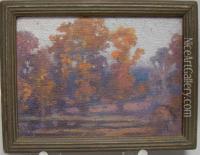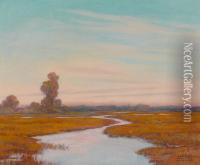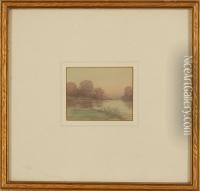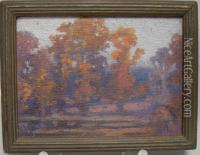Albert Prentice Button Paintings
Albert Prentice Button was an American artist born in 1884 in New York City. He was known for his work as an illustrator, painter, and art educator. Button's career spanned several decades, during which he developed a reputation for his illustrative works in publications and his contribution to the art community through teaching.
Button's artistic journey began with his education. He studied at the National Academy of Design in New York City and continued his art training at the Art Students League of New York. These institutions were pivotal in shaping the skills and artistic direction of many American artists in the late 19th and early 20th centuries, and Button was among the beneficiaries of this vibrant educational environment.
Throughout his career, Button worked as an illustrator for various magazines and publications. This was a time when the print industry was flourishing, and illustrators played a crucial role in visual storytelling. Button's illustrations were known for their narrative quality and technical proficiency. His ability to capture the essence of a story through his artworks made him a sought-after illustrator during his time.
In addition to his illustration work, Button was dedicated to the art of painting. He created numerous paintings that were exhibited in art shows and galleries. His style was influenced by the prevailing trends of his time, including American Impressionism and Realism. Button's paintings often featured landscapes, portraits, and everyday scenes, rendered with attention to light and color.
Button's impact on the art world was not limited to his own creations. He was also an influential art educator, teaching at several institutions throughout his career. His teaching philosophy was centered around the development of technical skills and the encouragement of individual artistic expression among his students. Button's legacy as an educator left a lasting impression on the next generation of artists.
Albert Prentice Button passed away in 1952, but his contributions to the field of illustration, painting, and art education have marked him as a notable figure in American art history. His works continue to be studied and appreciated for their contribution to the visual culture of his era.



